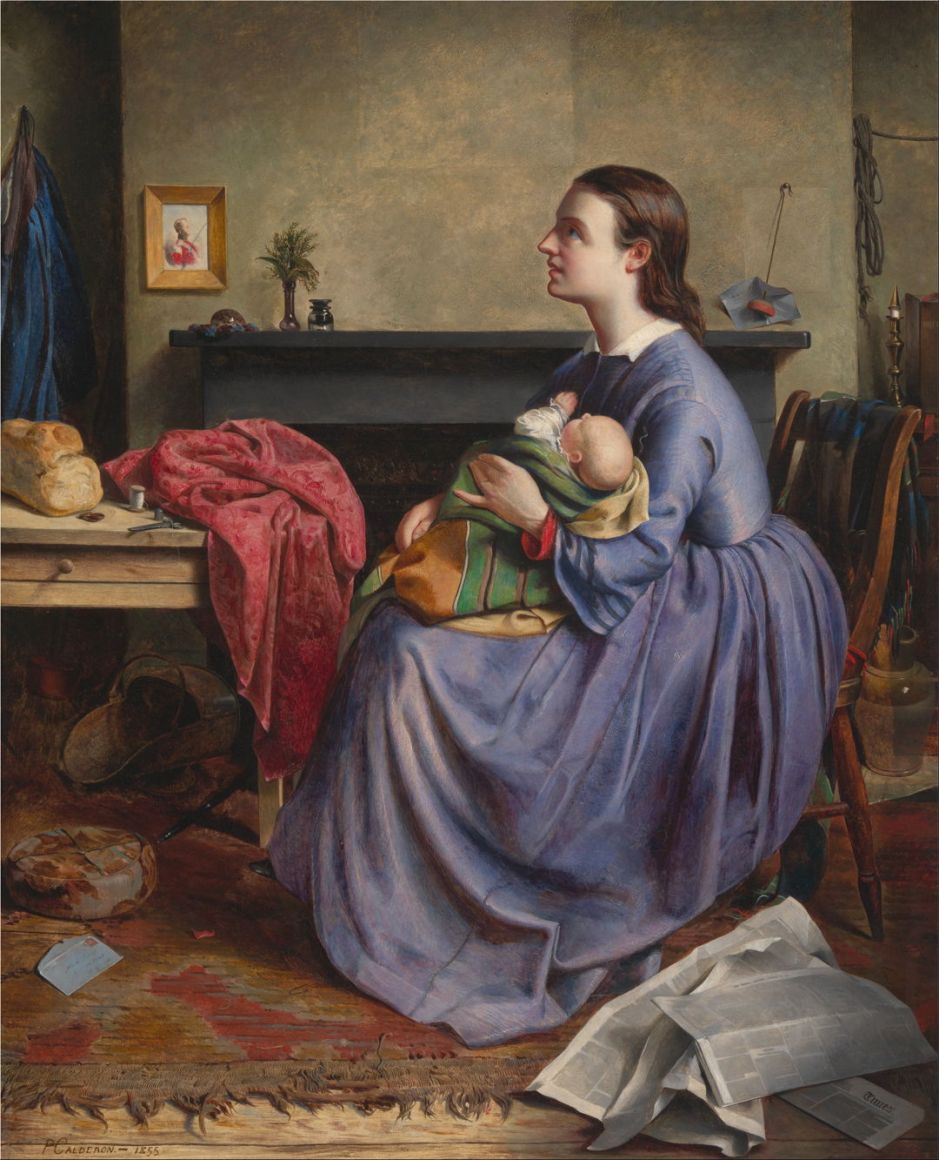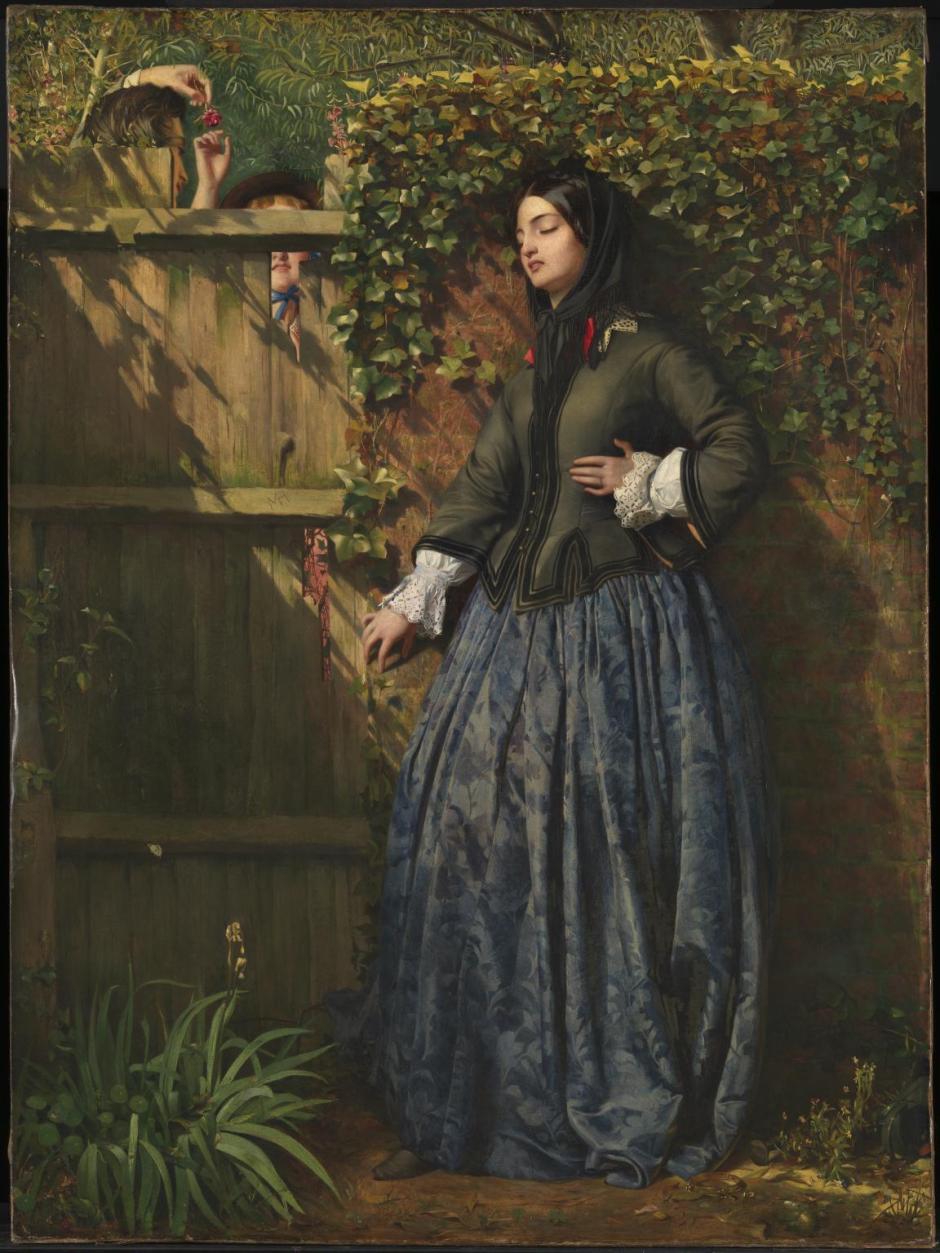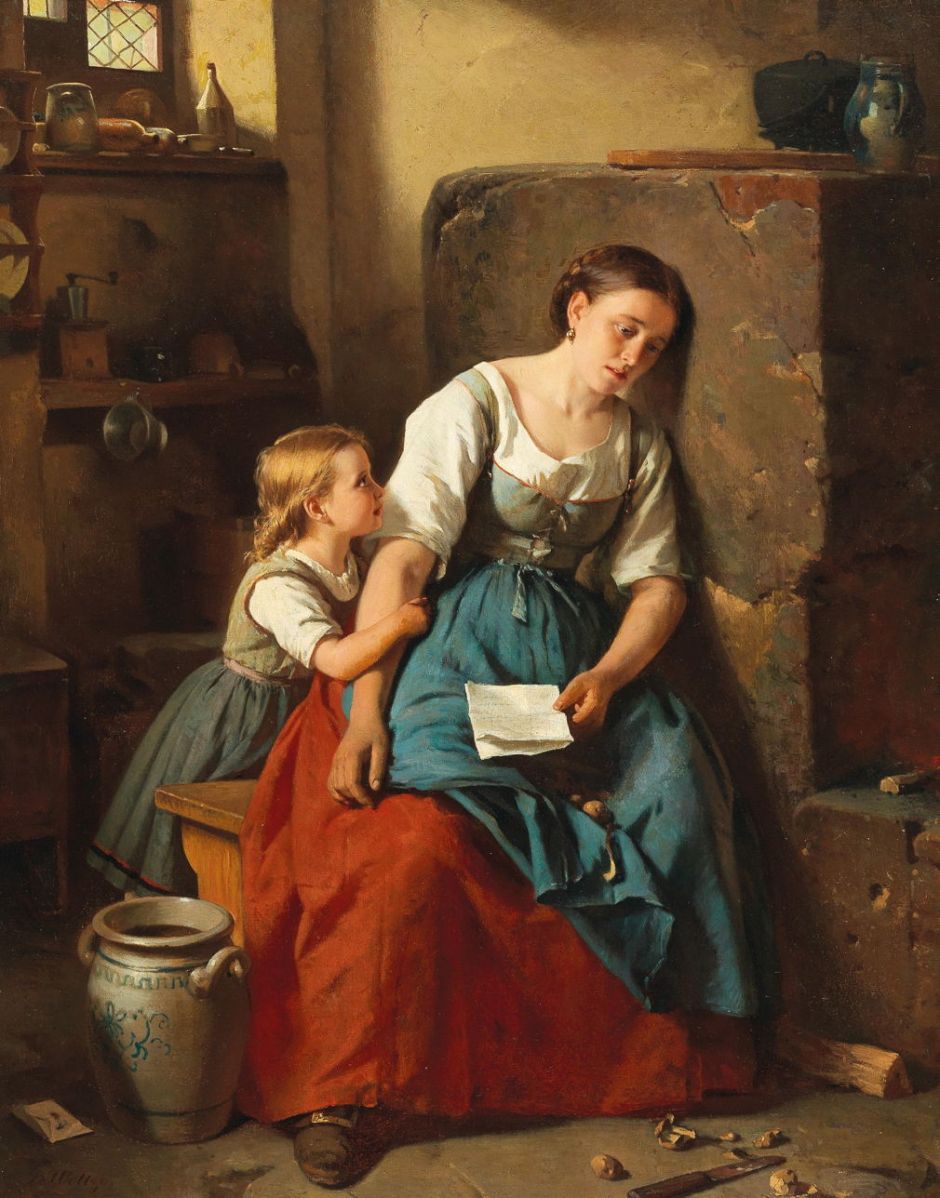For many centuries if not a couple of millenia, narrative painting relied on depicting stories which the viewer already knew. Because painting a single synchronous image can only show one moment in time, most artists accepted that the viewer would have to set that into a narrative sequence in their mind. If they didn’t recognise the story, then the painting was lost on them.
There were some workarounds, such as ‘multiplex’ narrative, in which two or more moments are incorporated into the same painting. These had been popular during the Renaissance, but fell into disfavour and disuse.
Knowing the underlying story to a narrative painting is required for closure. Even the most skilled narrative painters like Nicolas Poussin were unable to achieve full closure in a painting alone. But without closure, the viewer is left wondering and unsatisfied.
In the nineteenth century, storytelling in literature changed. New genres such as detective and ‘mystery’ novels started to challenge the convention of narrative closure. Readers of Edgar Allan Poe’s short stories in the first half of the century, and Arthur Conan Doyle’s Sherlock Holmes novels towards the end of the century, developed a taste for something rather different.
In this series of articles, I’m going to look at examples of narrative paintings which lack closure and become the closest thing that visual art has to the literary riddle, leaving the viewer speculating rather than completing. In their heyday, between about 1895 and 1914, such unresolved narrative paintings became so popular that they frequently featured in the press – a peak in which they became known as problem pictures.
One of my goals is to demonstrate how these didn’t arise out of the blue, but evolved from 1850 onwards, perhaps even earlier. Neither were they a British phenomenon, and far from vanishing by the end of the First World War, they continue even today.

As far as I can discover, one of the earliest major paintings which lacks narrative closure is William Holman Hunt’s The Awakening Conscience, which he painted during the period 1851-53 to contrast with The Light of the World (1851-53). As with most masterly narrative paintings, its story is assembled from a multitude of clues which are to be found in its image.
It shows a fashionable young man seated at a piano in a small if not cramped house in the leafy suburbs of London, in reality Saint John’s Wood. Half-risen from the man’s lap is a young woman who stares absently into the distance. They’re clearly a couple in an intimate relationship, but conspicuous by its absence is any wedding ring on the fourth finger of the woman’s left hand, which is at the focal point of the painting. This is, therefore, extra-marital.
Around them are signs that she is a kept mistress with time on her hands. Her companion, a cat, is under the table, where it has caught a bird with a broken wing, a symbol of her plight. At the right edge is a tapestry with which to while away the hours, and her wools below form a tangled web in which she is entwined. On top of the gaudy upright piano is a clock. By the hem of her dress is her lover’s discarded glove, symbolising her ultimate fate when he discards her into prostitution. The room itself is decorated as gaudily as the piano, in poor taste.
The couple have been singing together from Thomas Moore’s Oft in the Stilly Night when she appears to have undergone some revelatory experience, causing her to rise. For Hunt this is associated with a verse from the Old Testament book of Proverbs: “As he that taketh away a garment in cold weather, so is he that singeth songs to an heavy heart.” Ironically, his model was his girlfriend at the time, Annie Miller, an uneducated barmaid who was only sixteen herself.
Hunt leads us to imagine that this kept mistress has had a religious moment, seeing the route to her redemption as her conscience is awakened. The image brings hope without any resolution.
As Hunt moved away from the Pre-Raphaelite Brotherhood, he wasn’t the only painter who was asking viewers to puzzle at his images.

The wonderfully-named Philip Hermogenes Calderon followed in 1855 with his “Lord, Thy Will Be Done”. This quotation is derived from the Gospel account of what was turned into the Lord’s Prayer, and has subsequently been used on many Christian religious occasions.
A young mother cradles her baby on her lap, looking up to the left. She is living in difficult circumstances, but isn’t destitute, and unlike Hunt’s young woman she wears a wedding ring on her left hand. The carpet is badly worn, and the coal scuttle empty, but there is a loaf of bread on the table: she has her ‘daily bread’, another reference to the Lord’s Prayer.
A portrait of a fine young man hangs above the mantlepiece, indicating that her husband and the baby’s father is currently absent on military service. Several issues of The Times newspaper are scattered on the floor at the right, as if the woman has been following news of a military campaign overseas. Under the table is a letter, most probably from her husband.
The clues all point to the woman putting her trust in the Lord, but despite that hope there is no resolution.

The following year, Calderon exhibited Broken Vows (1856) at the Royal Academy, where the painting proved a great success, and remains his best-known work. It’s also the earliest true ‘problem picture’ that I have come across.
A beautiful young woman, displaying her wedding ring, stands with her eyes closed, clutching a symbolic ‘heart’ area on her chest to indicate that her love life is in trouble. On the ground near the hem of her dress is a discarded necklace or ‘charm’ bracelet. The ivy-covered wall behind her would normally indicate lasting love, which was her aspiration.
A set of initials are carved on the fence, and on the other side a young man holds a small red flower in front of his forehead, which a young woman is trying to grasp with her right hand. The wooden fence appears tatty, and has holes in it indicating its more transient nature, and affording glimpses of the couple behind.
Whereas clues in the earlier two paintings lead to consistent if unresolved narrative, Calderon has here deliberately introduced considerable ambiguity. The eyes of the shorter person behind the fence are carefully occluded, leaving their gender open to speculation. Most viewers are likely to conclude that the taller figure behind the fence is the unfaithful husband of the woman in front, but that requires making assumptions which aren’t supported by visual clues. Whose vows are being broken? Calderon leaves us to speculate.
Paintings of this type were by no means confined to Britain. Here are two slightly later examples from Germany (or rather Prussia, as it was then).

Throughout Europe, people were migrating to North America in the hope that they could make their fortunes there. This inspired Berthold Woltze to paint A Letter from America in about 1860, in which an elderly mother and father are eagerly reading a letter, presumably from their migrant son, and brother to the young woman, who looks as if she might consider going too.

Woltze is one of several artists who developed the scenario of the received letter, as seen in this undated painting of The Letter, which provides fewer clues to a more substantial story. A young mother has just received, opened, and read a letter. She leans against the massive stone hearth, looking badly crestfallen, as her young daughter holds her arm and looks up at her mother’s face. The mother has been peeling potatoes, which are now scattered on the floor, and in her apron. Her shoes are badly worn, and she is clearly not well off.
The letter’s envelope lies on the floor, at the lower left corner, but gives no further clues. This is clearly bad news, and probably about her husband. Is he wounded, missing, dead, or has he left her?

